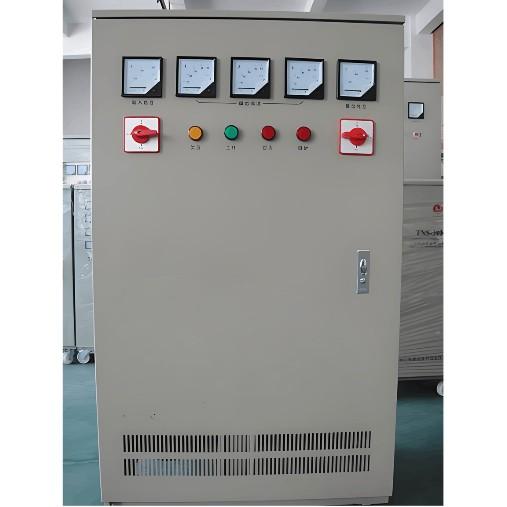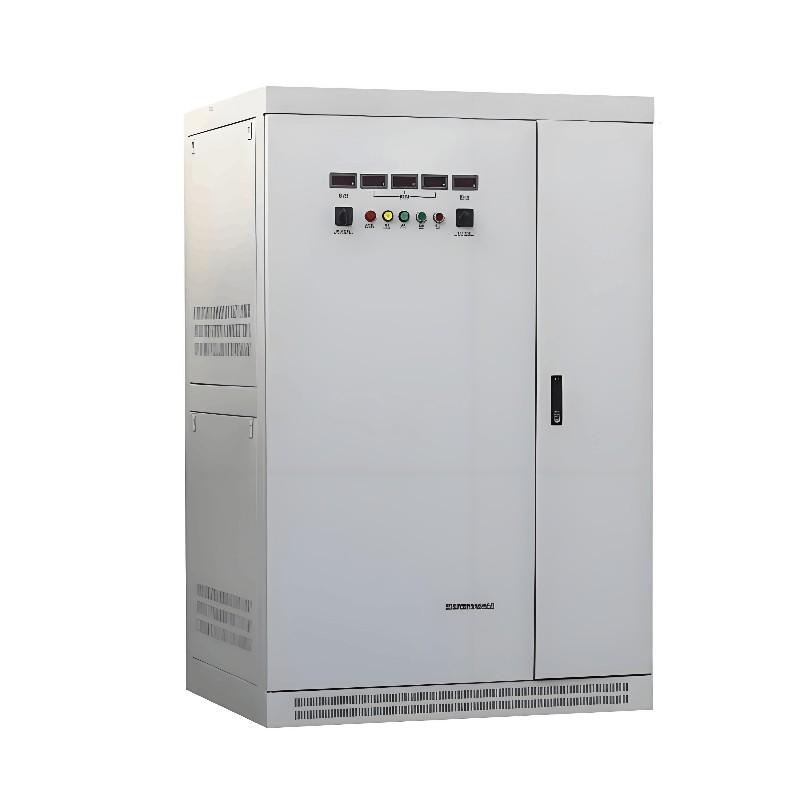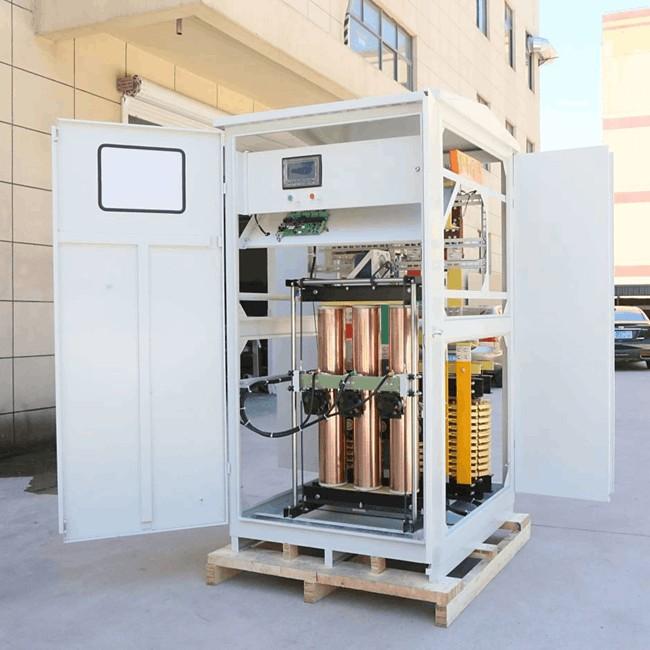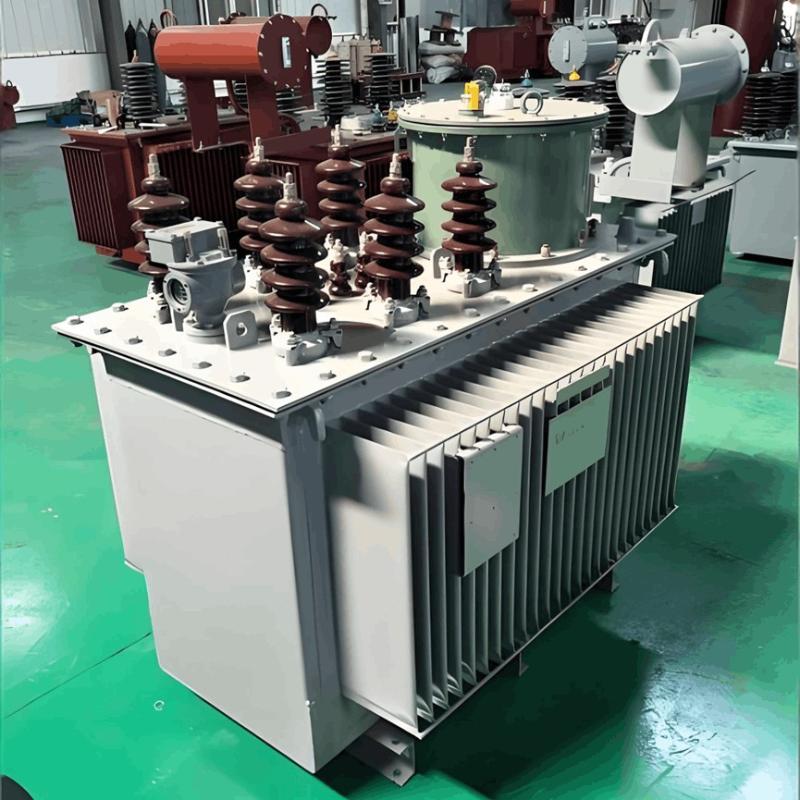I. Wstęp
Podczas wymiany jednofazowych stabilizatorów napięcia serii ABB RS na jednofazowe przemysłowe stabilizatory napięcia występuje wiele kluczowych trudności, takich jak niezgodność parametrów technicznych, niekompatybilne interfejsy sterujące, złożona integracja systemu oraz zgodność ze standardami bezpieczeństwa. Jeśli te problemy nie zostaną prawidłowo rozwiązane, system może działać nieprawidłowo, niestabilnie lub nawet stanowić zagrożenie dla bezpieczeństwa. Pracując w firmie ABB przez 10 lat, jestem bardzo obeznany z tymi urządzeniami. Poniżej przeanalizuję problemy występujące podczas wymiany pod kątem parametrów technicznych, interfejsów sterujących, integracji systemowej i standardów bezpieczeństwa, a także przedstawię pewne rozwiązania.
II. Problemy związane z niezgodnością parametrów technicznych
Istotne różnice w kluczowych parametrach między jednofazowymi przemysłowymi stabilizatorami napięcia a stabilizatorami serii ABB RS to pierwszy problem do rozwiązania podczas wymiany. Jako urządzenia przemysłowe, stabilizatory serii ABB RS mają większą moc, wyższą dokładność regulacji i szersze zakresy wejściowe-wyjściowe. Weźmy na przykład stabilizatory napięcia ABB; używają one kontroli fazy, z rozdzielczością regulacji do 0,1° kąta fazowego, podczas gdy zwykłe jednofazowe stabilizatory napięcia nie mają takiej wysokiej dokładności.
(1) Różnice w znamionowym napięciu i zakresie wyjściowym
Seria ABB RS może obsługiwać szerszy zakres napięcia wejściowego (np. 180 - 260V) i bardziej elastyczną regulację wyjściową (np. ciągła regulacja od 0 - 250V). Zwyczajne stabilizatory są ograniczone przez swoją konstrukcję mechaniczną lub metody sterowania i trudno jest osiągnąć taki efekt. Jeśli nowe urządzenie nie spełnia wymagań regulacji napięcia oryginalnego systemu, będzie to bardzo uciążliwe w scenariuszach wymagających wysokiej dokładności sterowania.
(2) Niezgodność mocy
Przemysłowe stabilizatory ABB mogą obsługiwać obciążenia o wyższej mocy (3 - 30kVA jest typowe), podczas gdy moc zwyczajnych jednofazowych stabilizatorów może być znacznie mniejsza (0,2 - 10kVA). Jeśli moc nowego urządzenia jest niewystarczająca, jest ono podatne na przeciążenia, nadmierny wzrost temperatury lub nawet bezpośrednie uszkodzenie. Ponadto, konstrukcja odprowadzania ciepła stabilizatorów napięcia ABB jest bardziej zaawansowana, korzystając z wydajnych chłodników i cichych, długotrwałych wentylatorów, a wydajność odprowadzania ciepła może być zwiększona o 30% przy tej samej objętości, co zwyczajne stabilizatory nie mają.
(3) Różnice w metodach regulacji
Seria ABB RS może korzystać z technologii cyfrowego sterowania, wspierając łagodny start/wyłączenie, a proces regulacji jest płynny i precyzyjny; zwyczajne stabilizatory mogą korzystać z sterowania mechanicznego lub prostego analogowego, a regulacja nie jest wystarczająco płynna, co spowoduje zmniejszenie szybkości reakcji systemu i dokładności regulacji.
III. Wyzwania związane z kompatybilnością interfejsów sterujących
Kompatybilność interfejsów sterujących to drugie główne trudności, głównie w zakresie protokołów komunikacyjnych, typów sygnałów i formatów sygnałów. Przemysłowe urządzenia ABB często używają standardowych protokołów komunikacyjnych, takich jak Modbus RTU lub Profibus DP, podczas gdy zwyczajne jednofazowe stabilizatory napięcia mogą obsługiwać tylko proste wejścia sygnałów analogowych lub sterowanie mechaniczne.
(1) Niezgodność protokołu komunikacyjnego
Seria ABB RS może obsługiwać protokół Modbus RTU przez interfejs RS485, aby wymieniać dane z PLC lub superkomputerami. Na przykład, przekształtniki częstotliwości ABB (takie jak serię ACS355 i ACS580) są wyposażone w funkcje komunikacji Modbus RTU jako standard, a można używać powszechnych kodów funkcji do czytania/pisania pojedynczych i wielu rejestrów. Jednakże, zwyczajne jednofazowe stabilizatory napięcia mogą nie posiadać tego cyfrowego interfejsu i obsługiwać tylko wejście sygnałów analogowych, takie jak 0 - 10V lub 4 - 20mA.
(2) Konflikt typu sygnału
Jeśli oryginalne urządzenie ABB używa sygnału prądowego 4 - 20mA do sterowania napięciem wyjściowym, a nowe urządzenie rozpoznaje tylko sygnał napięciowy 0 - 10V, należy dodać moduł konwersji sygnału; w przeciwnym razie, sygnał sterujący nie będzie poprawnie przesyłany, a wydajność regulacji systemu zostanie wpłynięta.
(3) Różnice w formatach sygnałów
Parametry komunikacyjne urządzeń ABB mają określone ustawienia, takie jak 9600 baud, brak parzystości, 8-bitowe dane, 1-bitowa stopka i określona metoda sprawdzania CRC. Jeśli parametry lub formaty danych nowego urządzenia są różne, komunikacja może się nie powieść, a analiza danych również może być błędna. Na przykład, gdy robot ABB komunikuje się za pomocą Modbus RTU, konieczne jest krzyżowe połączenie z portem szeregowym 232 i ścisłe przestrzeganie kodów funkcji (0x03 do odczytu wielu rejestrów utrzymywanych, 0x10 do zapisu wielu rejestrów utrzymywanych) i formatów ramek danych. Ponadto, urządzenia ABB mogą obsługiwać specyficzne strategie, takie jak zamknięte sterowanie i wektorowe sterowanie, podczas gdy zwyczajne stabilizatory mogą obsługiwać tylko otwarte sterowanie. Zmiana charakterystyk odpowiedzi systemu wpłynie również na ogólną wydajność sterowania.
IV. Analiza wpływu integracji systemowej
Integracja systemowa musi być uwzględniona kompleksowo, w tym interakcja z istniejącym PLC/HMI i dostosowanie strategii sterowania. Przemysłowe urządzenia ABB są głęboko zintegrowane z systemem automatycznego sterowania, a bezpośrednia wymiana stabilizatora może prowadzić do problemów i wpływać na ogólną wydajność sterowania.
(1) Problem adaptacji komunikacji PLC
Jeśli oryginalne urządzenie ABB komunikuje się z PLC za pomocą protokołu Modbus RTU lub Profibus DP, a nowe urządzenie obsługuje tylko interfejs analogowy, konieczne jest ponowne skonfigurowanie modułu komunikacyjnego PLC lub dodanie konwertera protokołów. Na przykład, przekształtnik częstotliwości ABB realizuje komunikację Modbus RTU za pomocą adaptera FMBA-01 i komunikację Profibus DP za pomocą adaptera FPBA-01. Jeśli nowe urządzenie nie obsługuje tych protokołów, wymagane jest dodatkowe dostosowanie lub redesing architektury komunikacyjnej.
(2) Kompatybilność interfejsu HMI
Oryginalny interfejs HMI może być opracowany na podstawie specyficznych dla ABB sterowników protokołów, takich jak ControlST V07.00.00C i wyższych wersji. Jeśli protokół nowego urządzenia jest niekompatybilny, konieczne jest ponowne opracowanie logiki interakcji HMI lub użycie middleware, takiego jak OPC UA, do integracji, a interfejs użytkownika może wymagać redesing, zwiększając koszt modernizacji systemu.
(3) Necessity of Adjusting Control Strategies
The original ABB device may use advanced algorithms such as closed-loop control, vector control, and direct torque control, while the new device may only support open-loop control. The change in system response characteristics requires re-designing PID parameters or adding external feedback modules. For example, the ABB frequency converter supports multiple control methods such as V/f coordination control, slip frequency control, and vector control, while ordinary single-phase voltage regulators may only support simple phase control. Moreover, differences in control strategies may lead to system oscillations and response delays. After replacement, closed-loop testing and parameter adjustment must be carried out. For example, when an ABB robot communicates through Modbus RTU, it is necessary to ensure data synchronization and accuracy to avoid control problems caused by communication delays.
V. Issues with Safety Standards and Compliance
Safety standards and compliance must be strictly observed. Industrial-grade power devices must meet more stringent safety standards and certifications to ensure reliable system operation.
(1) Compatibility with CE Certification
ABB industrial devices usually comply with standards such as CE-LVD (Low Voltage Directive, EN 60950-1), CE-EMC (Electromagnetic Compatibility, EN 55014-1/2), and RoHS III (Restriction of Hazardous Substances). For example, the ABB TruONE automatic transfer switch complies with the CE standard and sets an industry safety benchmark. If the new device only complies with household standards (such as EN 60335-1), it will not meet the CE requirements of industrial scenarios.
(2) Electromagnetic Compatibility Issues
The industrial environment has strong electromagnetic interference. ABB devices have passed strict EMC testing (such as EN 55014-2 anti-interference testing) and can operate stably in harsh environments. If the EMC performance of the new device is not up to standard, it may cause system noise and communication failures, affecting overall reliability.
(3) Material and Environmental Requirements
RoHS III has added four restricted substances: DEHP, BBP, DBP, and DIBP. If the new device does not effectively control these substances, it will violate EU environmental regulations and the product cannot be sold in the European market.
(4) Risk of Missing Safety Functions
The original ABB device may have safety mechanisms such as over-voltage/over-current protection and ground fault detection, while ordinary single-phase voltage regulators may lack these advanced functions. For example, the ABB power regulator has functions such as soft start-up, soft shutdown, and radiator over-temperature detection protection to ensure the safe operation of the system. If the new device does not have a similar design, additional protection modules must be installed, increasing system complexity and cost.
VI. Solutions and Implementation Suggestions
In response to these problems, the following solutions and implementation suggestions are provided to help users successfully replace devices and ensure the safe and reliable operation of the system.
(1) Technical Parameter Matching Strategy
When selecting a new device, ensure that the technical parameters (rated voltage, output range, power capacity, etc.) basically match the original ABB device. If there are differences in parameters, evaluate the impact on system operation and consider making up for it with external devices or software adjustments. For example, if the output range of the new device is small, a voltage amplifier can be added to the system or the control logic can be adjusted to cover the voltage regulation requirements of the original system.
(2) Control Interface Adaptation Scheme
Design an adaptation scheme according to the control interface type of the original ABB device. If the original device uses the Modbus RTU or Profibus DP protocol and the new device only supports the analog interface, the following can be done: first, select a new device that supports the same protocol; second, add a protocol converter (such as a Modbus to analog adapter); third, modify the PLC program to adapt to the signal type of the new device. For example, when a Siemens PLC communicates with an ABB frequency converter through Modbus, specific communication parameters and program blocks must be configured to ensure correct data exchange.
(3) System Integration Optimization Measures
To ensure the seamless integration of the new device with the existing system, the following optimization measures are taken: first, re-evaluate the PLC program to adapt to the control characteristics of the new device; second, update the HMI interface to correctly display and control the new device; third, test the overall performance of the system (response speed, regulation accuracy, stability, etc.); fourth, develop a detailed system test plan to verify whether the replaced system meets the expected performance. For example, when an ABB robot communicates with a Modbus RTU device, a specific control program must be written to ensure data synchronization and accuracy.
(4) Safety Standard Compliance Verification
Before replacing the device, comprehensively verify the safety standard compliance of the new device: first, confirm whether it has passed certifications such as CE-LVD, CE-EMC, and RoHS III; second, check whether the materials meet environmental requirements; third, evaluate whether the safety functions meet system requirements; fourth, if necessary, add additional safety protection devices to make up for the deficiencies of the new device. For example, if the new device has not passed the EN 60950-1 certification, a product certified by IEC 62368-1 (the new standard replacing EN 60950-1) can be selected to ensure compliance with the latest safety standards.
VII. Phased Replacement Strategy
To reduce replacement risks, it is recommended to proceed in phases to gradually verify system performance and adjust control parameters.
(1) System Evaluation and Requirement Analysis
Comprehensively evaluate the voltage regulation requirements, load characteristics, and safety requirements of the original system, and clarify the specific functional requirements of the voltage regulator. Pay special attention to the rated voltage, output range, power capacity, and control interface type of the original ABB device to lay the foundation for selecting a new device.
(2) Selecting a Suitable Alternative Product
According to the system evaluation results, select a new device whose technical parameters basically match the original ABB device. If there are differences in parameters, evaluate the impact on system operation and consider adaptation schemes. For example, if the new device does not support the Modbus RTU protocol, a protocol converter can be added or the PLC program can be modified.
(3) Professional Installation and Commissioning
Find professional personnel with electrical equipment installation and maintenance qualifications for installation and commissioning. Pay attention to the following: check whether the wiring of the new device is correct to ensure compatibility with the electrical connection of the original system; commission the voltage regulation parameters to meet the requirements of the original system; test the safety functions to ensure that necessary protection can be provided; conduct system commissioning to verify whether the performance of the new device meets expectations. For example, when installing an ABB power regulator, it is necessary to ensure the normal operation of the heat dissipation system and correctly set the soft start/soft shutdown time.
(4) System Integration and Optimization
Integrate the new device into the existing system and optimize the control strategy and interface interaction: reconfigure the PLC program to adapt to the control characteristics of the new device; update the HMI interface to correctly display and control the new device; test the overall performance of the system (response speed, regulation accuracy, stability, etc.); adjust the control parameters according to the test results to optimize system performance. For example, when an ABB frequency converter communicates with a Siemens PLC through Modbus, specific communication parameters and program blocks must be configured to ensure correct data exchange.
VIII. Considerations for Maintenance and Spare Parts Supply
After replacement, maintenance and spare parts supply should also be emphasized. As a world-leading electrical and automation enterprise, ABB has a complete spare parts supply system and in-place technical support. The spare parts supply and technical support of ordinary single-phase power voltage regulators may not be so good.
(1) Mismatch of Maintenance Skills
ABB industrial devices usually require professional technicians for maintenance, while the maintenance of ordinary single-phase voltage regulators may be relatively simple. If the maintenance team is not familiar with the technical characteristics of the new device, the maintenance efficiency will be low, and equipment failures may not be eliminated in a timely manner. For example, the ABB power regulator has functions such as soft start-up, soft shutdown, and radiator over-temperature detection protection, and maintenance personnel need to understand the principles and operation methods of these functions.
(2) Different Spare Parts Supply Channels
ABB products supply spare parts through a global service network, supporting online purchase and original factory anti-counterfeiting verification. The spare parts of ordinary single-phase voltage regulators may have to be obtained from other suppliers, and they are completely different from ABB products. It is difficult to obtain spare parts, which increases maintenance costs and the risk of shutdown.
(3) Differences in Service Life
ABB industrial devices are designed for long-term stable operation, with a long service life and high reliability. The service life of ordinary single-phase voltage regulators may be short and the reliability may be low. If the service life of the replaced device is insufficient, the system maintenance frequency and cost will increase.
IX. Conclusion and Risk Warning
The main technical challenges in replacing ABB RS series single-phase voltage regulators with single-phase power voltage regulators lie in parameter mismatch, interface incompatibility, complex system integration, and inconsistent safety standards, which may lead to reduced system functions, unstable operation, and even safety hazards. To reduce risks, the following are recommended:
Select a new device whose technical parameters basically match the original ABB device. When there are large differences in parameters, consider adaptation schemes.
Ensure that the control interface of the new device is compatible with the existing system. If necessary, add a protocol converter or modify the PLC program.
Adopt a phased replacement strategy to gradually verify system performance and adjust control parameters.
Comprehensively verify the safety standard compliance of the new device to ensure that it meets the certification requirements such as CE-LVD, CE-EMC, and RoHS III.
Train the maintenance team to be familiar with the technical characteristics and maintenance methods of the new device.
Establish a new spare parts inventory to ensure the supply of key spare parts.
Safety must be the top priority in any device replacement to ensure that no new safety hazards are introduced during the replacement process. In the power system, the voltage regulator is a key device, and replacement must be extremely careful, preferably carried out under the guidance of professional technicians. If conditions permit, it is recommended to consult ABB official technical services to obtain more professional replacement suggestions and adaptation schemes.





















